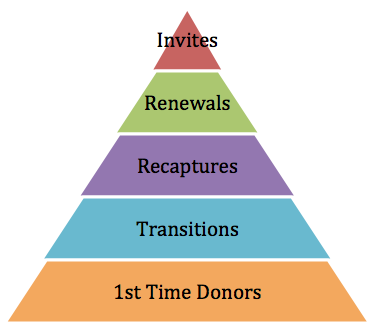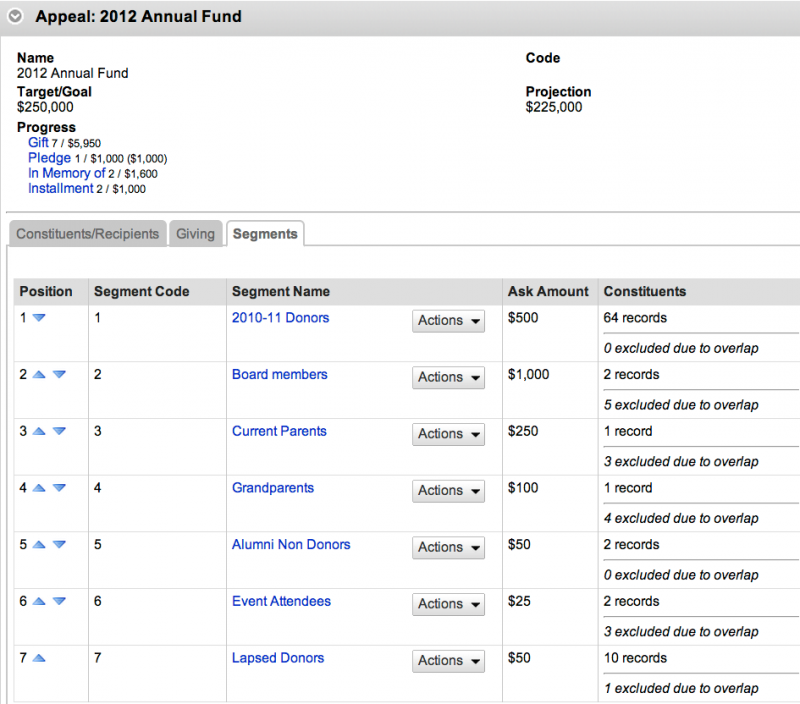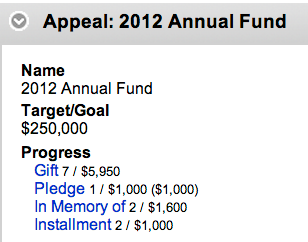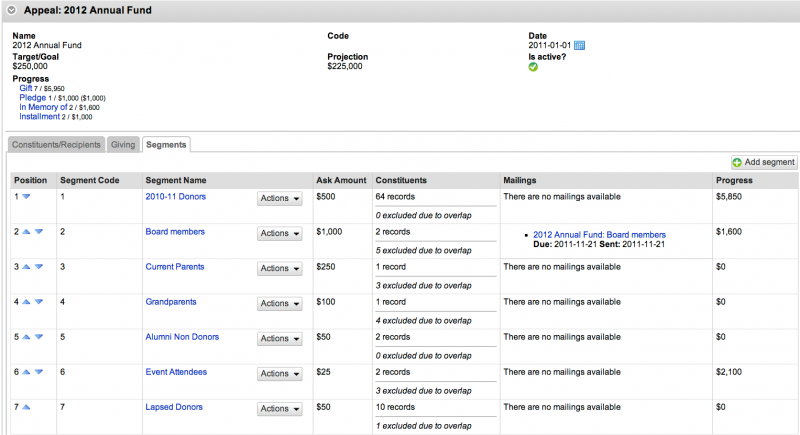Little Green Light is a cloud-based donor management system for fundraisers.
Subscribe to get our latest product updates, best practices and tips to grow your nonprofit.
6 Steps in a Successful Appeal: Part two of a six-part series
Segmentation is the practice of categorizing constituents into mutually exclusive groups based on a set of criteria, such as giving history and expected future giving or affinity for your organization. It can help you focus your appeal and maximize your fundraising efforts. It’s important to note that on average, nonprofit organizations have a 60-70% chance of retaining the donors they already have, a 20-40% chance of recapturing lost donors, and a less than 2% chance of acquiring a gift from a prospect. A segmented approach allows you to focus the bulk of your efforts on those that are most likely to support your organization.
The pyramid in Figure 6 below shows a segmentation you can use when planning your annual appeal.
Segmentation Pyramid

Figure 6. Hierarchical view of donor segments
By segmenting the data in your database, you are able to prioritize your solicitation strategies and focus your energies on those constituents that have the greatest giving potential. Whether you choose to segment by past giving history or affiliation, the above pyramid illustration should give you a good idea about how best to begin your segmentation efforts.
The five tiers of the segmentation pyramid are:
Invites represent past donors in cases where your information indicates you could invite them to give at a higher level. Though you will probably write a letter to all of your segments, you should have your executive director sign and add hand-written postscripts for the Invite and Renewal segments ahead of any others. And consider making phone calls to the top few segments, especially the high-value prospects in those segments.
Renewals have given to your fund in the past year; you’re asking them to give at the same level in the current year. Consider spending most of your effort on Invites and Renewals, since they’re the most invested in your school or organization and have already given in the past (not to mention it’s easier to get a renewal than a first-time gift).
Recaptures are LYBUNTs (gave last year but unfortunately not this) or SYBUNTS (gave some year but unfortunately not this) who’ve given in the past and who you’re looking to recapture.
Transitions may have volunteered or somehow given to your school or organization other than through your annual giving campaign. If you personalize your approach with Transitions, you’re more likely to succeed.
First-time donors are the biggest challenge. There are usually a sizeable number of people in this segment. You can break them out by group or affinity as well.
Within each tier, you can also choose to further segment your prospects by ask amount; that is, how much you’d like them to contribute to your annual campaign. For example, within your renewal segment, you could have the following segments: $1,000+, $999-$500, $250-$499, under $250. Assigning a specific ask amount, referencing the donor’s last gift when applicable, and drafting a personalized letter to the constituents in that segment are all crucial to obtaining a good result from your solicitations.
Consider this example on how segmenting by a specific affinity group netted a significant return: A school’s longtime coach volunteered to write a letter to his former players to ask them to support the annual giving program. All students who had played for the school during the coach’s 20-year tenure, identified through referring to yearbooks, were flagged in the database. Those who had never donated received a personalized letter with a specific ask amount from their former coach. Where the average acquisition rate for new donors is less than 2%, over 15% of these non donors gave to the school.
In addition to helping focus and personalize your outreach strategies, segments also can be instrumental in helping measure your fundraising results. Key metrics such as conversion rate (percentage who give among total asks) and median giving amount (mid-point of giving amounts) by segment and year over year can give you key insights into the success of your solicitation strategies. For example, if the conversion rate for your Renewal segment drops from 70 to 50 percent, that’s an indication of a serious problem. If you measure only total metrics, that number could get lost among the more populous segments.
Through segmentation, you can leverage the information you collected in step 1, ‘Identifying prospects and acquiring data,’ to develop a strategy and set up your solicitation. This can make a big difference in how you approach your prospective donors.
Creating your appeal
Appeal segments in Little Green Light

Figure 7. An example of an LGL appeal with a set target goal, projections, progress, and hierarchical segments.
You can define as many segments as you wish, but it’s prudent to take into account your staffing resources as each segment requires additional work. Also consider your budget, the amount you need to raise, as well as how much information you have.
In the example above, we’ve segmented constituents based on past giving history as well as affinity. In the example below, we’ve segmented based more on giving history. We identified a Default Ask amount in our Appeal letter to provide a target donation amount to each segment. One segment shows $0 listed in the Default Ask amount; in that case, our appeal letter tells members of this segment what they gave last year and asks them to equal that for the current appeal.
Summary of the results to date for the appeal


Figure 8. Screenshot from LGL of annual appeal segments
For more information on segmentation, watch this two-minute video about segments in LGL.
Key LGL features that can make your annual appeal successful:
End of part two
Ready to try LGL? Get your first 30 days free. No credit card required.